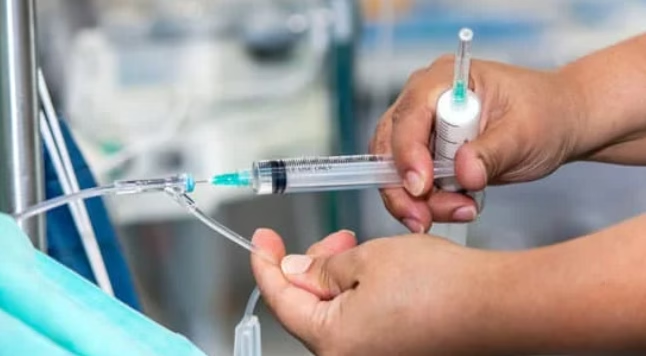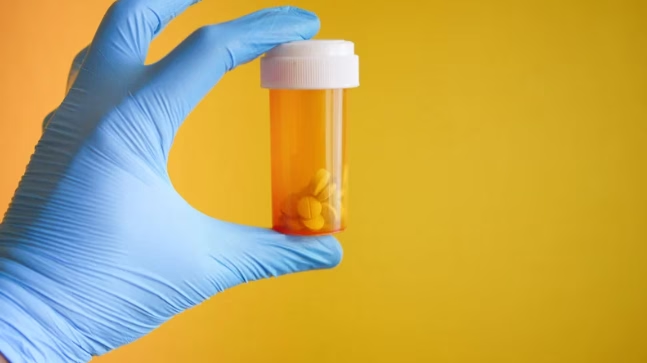
Drug-related ER visits in Georgia continue to rise in 2025, driven by opioid overdoses, stimulant use, and medication errors.
The state’s Department of Public Health tracks these visits through monthly syndromic surveillance reports for January through August 2025, complemented by national CDC dashboards that monitor suspected nonfatal overdoses with rates updated monthly.
This article explains what the latest data reveal, why certain drugs dominate Georgia’s ER burden, and which proven solutions can reduce both visits and fatalities.
Why Drug-Related ER Visits Georgia Matter Now?
Georgia tracks drug related ER visits Georgia 2025 through multiple surveillance systems that paint a clear picture of the crisis. The Georgia Department of Public Health publishes Drug Overdose Syndromic Surveillance Monthly Reports covering January through August 2025, documenting ED and urgent care visits tied to overdoses. These timely reports serve as Georgia’s frontline indicator of trends by drug category, age, and region.
At the national level, the CDC operates two complementary systems. The syndromic stream, DOSE-SYS, updates monthly with rates per 10,000 ED visits across nested drug categories like opioids, fentanyl, stimulants, benzodiazepines, and heroin. Georgia participates alongside 46 states and DC, with coverage exceeding 90 percent of emergency departments. The discharge stream, DOSE-DIS, provides more complete annual burden estimates with a six month lag, using validated ICD-10-CM coding for confirmed initial encounters.
Georgia’s own OASIS platform defines ED and inpatient drug overdose visits using standardized ICD-10-CM codes. The OASIS ER/Inpatient Mapping Tool supports county-level analysis from 2016 through the latest available years, currently 2023 and 2024, with breakdowns by payor, age, sex, race, ethnicity, and census tract. OASIS includes all poisoning intents—unintentional, self harm, assault, and undetermined—which differs from CDC definitions that exclude intentional self harm and assault. This difference matters when comparing Georgia data to national estimates.
Top Drivers of Drug Related ER Visits Trends
Opioids and Fentanyl Dominance
Synthetic opioids, especially illicitly manufactured fentanyl, continue to drive the majority of acute overdose presentations in emergency departments nationally and in Georgia. High dose exposure patterns with counterfeit pills can trigger severe precipitated withdrawal that challenges ED management. National data from 2019 to 2021 showed that only 7.4 percent of patients with suspected opioid overdose ED visits received a naloxone prescription within 30 days, and only 8.5 percent received buprenorphine. This represents a critical missed opportunity, given that 5.5 percent of individuals with nonfatal overdose die within one year.
Fentanyl’s potency and prevalence mean Georgia EDs see cases where naloxone alone may not fully reverse respiratory depression, especially when fentanyl is combined with xylazine, a non-opioid sedative that diminishes naloxone effectiveness. These polysubstance combinations complicate ED protocols and increase the risk of repeat visits.
Stimulants and Polysubstance Patterns
Stimulants involving overdoses have climbed steadily. From 2018 to 2019, amphetamine overdose rates rose 18.3 percent and cocaine rates rose 11 percent across 29 states including Georgia. Critically, co-involvement with opioids was substantial: 23.6 percent of cocaine involved overdoses and 17.1 percent of amphetamine overdoses also involved opioids. This polysubstance reality means ED teams must screen for multiple drugs, provide cardiac monitoring for stimulants, and address opioid risk even when the presenting substance appears to be methamphetamine or cocaine.
Benzodiazepine co-involvement adds another layer of risk. In 2019 to 2020, 21.9 percent of benzodiazepine overdose ED visits nationally co-involved opioids, raising respiratory depression risk and complicating discharge planning.
Emerging Medication Errors and Novel Substances
A less traditional but growing contributor to drug related ER trends in Georgia 2025 is medication toxicity from GLP-1 receptor agonists like semaglutide and tirzepatide. The Georgia Poison Center documented GLP-1 related calls rising from 129 in 2023 to 246 in 2024 and 254 years to date in 2025, with over 40 percent leading to ED referrals. Most dosing errors occurred at the first dose, often when patients injected an entire vial instead of the correct measured dose, a problem amplified by compounded vial products compared to prefilled pens.
SAMHSA’s DAWN Network Watch for Q1 2025 also flags emergent substances like “pink cocaine,” a variable combination that may include ketamine, MDMA, methamphetamine, cocaine, fentanyl, or xylazine. These unpredictable mixtures complicate both ED triage and syndromic surveillance, underscoring the need for Georgia to update chief complaint dictionaries and clinical protocols regularly.

How Georgia Surveillance Systems Work?
Georgia’s approach to tracking drug related ER visits Georgia combines state and national streams, each with different purposes, timeliness, and definitions. Understanding these differences is essential to interpret trends accurately.
DOSE-SYS offers the fastest signal, with monthly updates showing rates per 10,000 ED visits for all drugs, all opioid, fentanyl, heroin, benzodiazepine, all stimulant, methamphetamine, and cocaine syndromes. Because definitions are nested and non-mutually exclusive, a single visit can be classified in multiple categories when polysubstance use is involved. This mirrors real world patterns but means you cannot simply add categories together.
DOSE-DIS delivers the most complete, validated burden estimates using discharge data with ICD-10-CM codes. It includes only initial encounters with unintentional or undetermined intent poisonings, excluding adverse effects and underdosing. With approximately a six month lag after year end, DOSE-DIS is ideal for annual evaluations, state to state comparisons, and program impact assessments.
Georgia OASIS provides the granular, county level view necessary for local planning. It uses ICD-10-CM T36 through T50 codes with intents 1 through 4, meaning it includes intentional self harm and assault cases alongside unintentional and undetermined overdoses. This broader definition makes OASIS counts higher than DOSE-DIS for the same period. OASIS also flags known data issues, such as ethnicity underreporting in approximately 12 percent of ED discharges since 2016 and periodic coding updates that change historical counts.
The table below compares the three systems relevant to Georgia in 2025:
| System | Update Frequency | Coverage | Strengths | Limitations |
| DOSE-SYS | Monthly | 46 states, >90% EDs | Timely trend detection, rates per 10,000 visits | Preliminary diagnoses, facility participation varies |
| DOSE-DIS | Annual | 34 states, >95% facilities | Validated burden estimates, demographic detail | Six month lag, excludes intentional self harm and assault |
| Georgia OASIS | Annual | Georgia facilities | County level maps, payor and SES breakdowns | Includes all intents 1 through 4, ethnicity undercount |
Proven Solutions to Reduce ER Burden
Standardize ED Discharge Practices
The single highest yield intervention Georgia can implement is to standardize evidence based discharge practices after suspected opioid overdose. This means offering naloxone to every eligible patient before discharge, providing training to the patient and family on how to use it, and either initiating buprenorphine in the ED or ensuring a warm handoff to an immediate access clinic within 24 to 72 hours. National data show these practices remain far below the standard for other life saving medications. When only 7.4 percent of overdose survivors receive naloxone prescriptions, we miss the opportunity to equip people with the tool that can reverse their next overdose.
Embedding peer recovery coaches in EDs and screening for polysubstance use including alcohol, stimulants, and benzodiazepines ensures that discharge planning addresses the full clinical picture. Brief interventions and referrals to contingency management pathways for stimulants can connect patients to ongoing support.
Expand Community Naloxone Access
Georgia has built infrastructure for naloxone distribution, including community organizations, mail order access through programs like NEXT Distro, and innovative vending machines. The Newton County Sheriff’s Office launched a free naloxone vending machine in 2025, supported by the Georgia Opioid Crisis Abatement Trust and the Department of Public Health. Scaling this model across law enforcement facilities, community centers, and ED lobbies can saturate high burden counties identified through DOSE-SYS and OASIS hotspot analytics.
Address Preventable Medication Errors
Georgia can reduce preventable GLP-1 related ED visits within months by prioritizing prescriber and pharmacist demonstration and teach back for any new starts or dose escalations, accelerating conversion from compounded vials to FDA approved prefilled pens, and embedding the poison control hotline in discharge instructions and patient portals. These straightforward measures can measurably cut ED volume tied to dosing confusion.

Build a Georgia Overdose Data Hub
Transparent, timely public reporting is not a luxury. States like Maine and Maryland operate comprehensive data hubs that integrate DOSE, poison center, EMS, and fatal overdose streams into interactive dashboards with county and neighborhood level analytics. Georgia should launch a similar hub by 2026, publishing quarterly ED overdose reports modeled on Virginia’s Q2 2025 release, which presents rates per 10,000 ED visits by drug category, region, sex, and age. This level of transparency enables targeted, equitable response and allows communities to track progress.
Focus on Hotspots and Equity
Geospatial analyses show that overdose hotspots cluster in neighborhoods with higher proportions of Black and Latino residents, renter and vacant housing, unemployment, poverty, and crowded housing. Risk increases in a dose responsive manner with poverty prevalence. For Georgia, county and neighborhood level hotspot detection should anchor the allocation of harm reduction services, medication for opioid use disorder access, and social support. Embedding services with existing community organizations, including faith based groups and health centers already present in hotspot areas, ensures culturally responsive, trusted outreach.
Why Does This Matter for Georgia?
Drug related ER visits in Georgia 2025 are not just a healthcare issue. They signal gaps in prevention, treatment access, and discharge care that translate into preventable deaths and overwhelming ED workloads. The fact that only a small fraction of overdose survivors leave the ED with naloxone or buprenorphine means we are missing the last mile of care at the exact moment when intervention can save lives.
Georgia has every tool it needs to change the trajectory. The state participates in nationally validated surveillance systems, maintains DOSE consistent coding in OASIS, and has harm reduction infrastructure ready to scale. By closing the ED to community gap, making life saving medications ubiquitous, making data public and timely, and placing services where Georgians need them most, the state can reduce nonfatal overdoses, protect lives, and ease the burden on emergency departments in the year ahead.
The evidence is clear. The solutions are proven. What remains is implementation with urgency and equity.
If you or someone you know has experienced a drug related overdose or is struggling with substance use, help is available. Thoroughbred Wellness & Recovery offers medical detox and comprehensive dual diagnosis treatment in Marietta and Cartersville, with 24/7 admissions and evidence based care designed to support lasting recovery.









